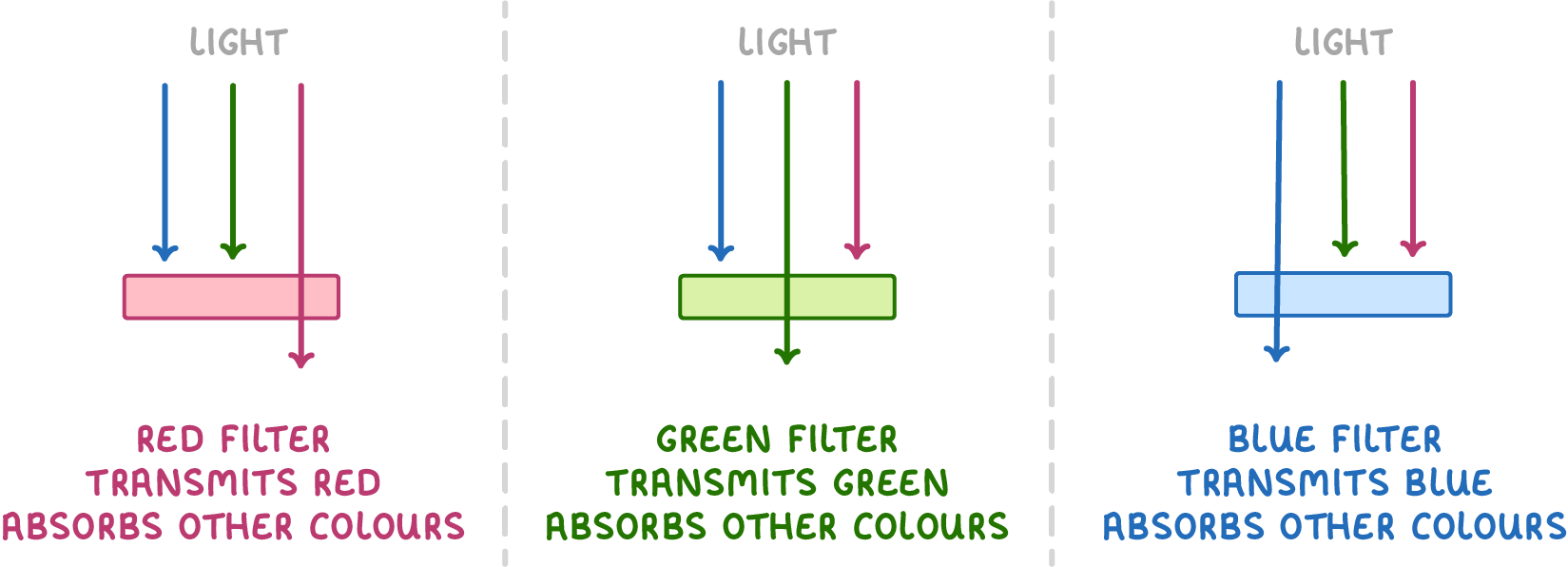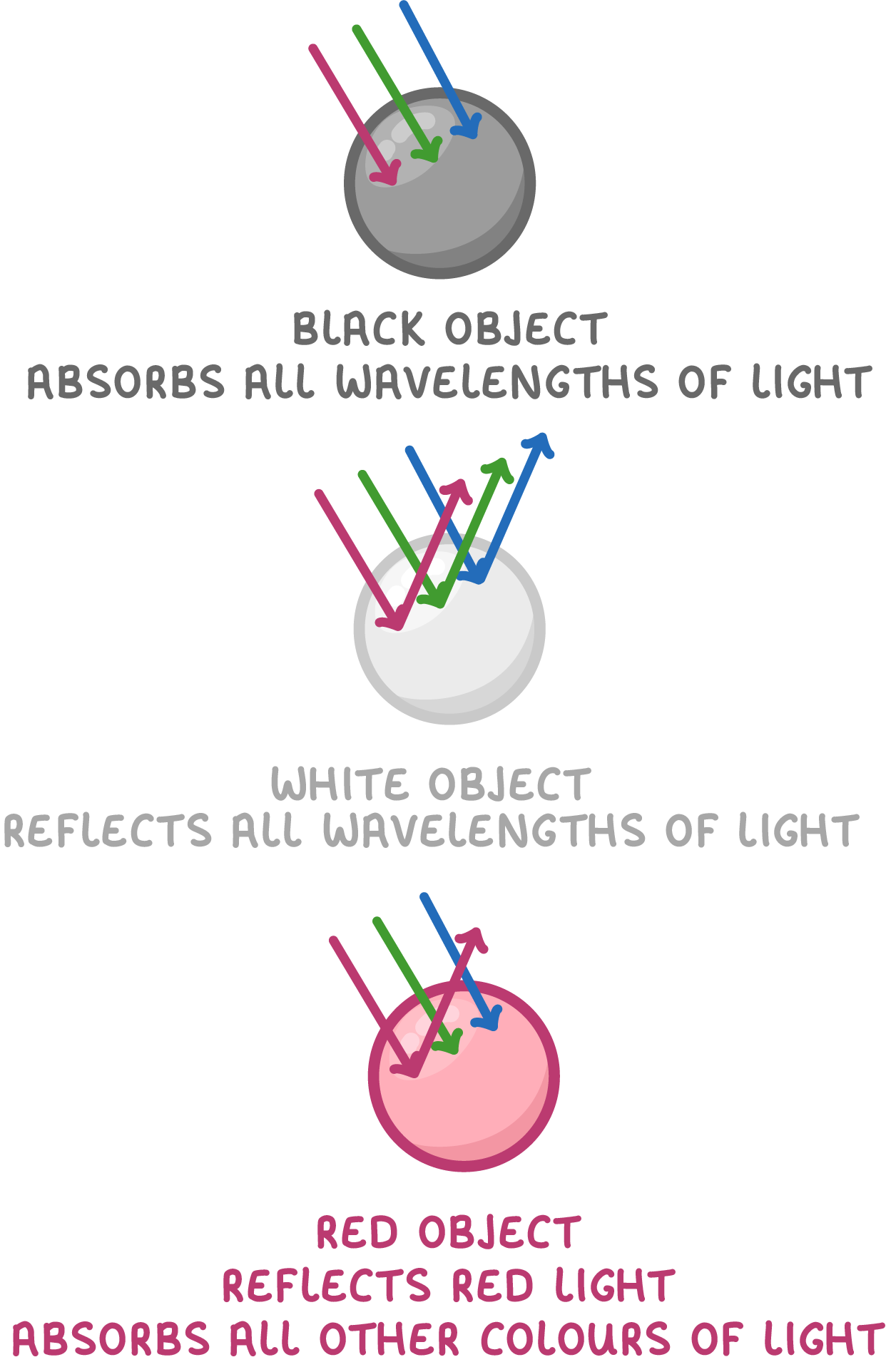Colour
This lesson covers:
- How white light consists of a spectrum of colours
- How coloured filters and objects interact with light
- Why objects seem to change colour under different lighting
White light is made up of many colours

What we perceive as white light is actually made up of a spectrum of colours.
This rainbow of colours becomes visible when white light passes through a prism or raindrops.
The colours range from low frequency (long wavelengths) at the red end, to high frequency (short wavelengths) at the violet end.
The colours always appear in the same order, which can be remembered using the mnemonic "Richard Of York Gave Battle In Vain".
Coloured filters only transmit certain colours

Filters only allow certain colours to pass through while absorbing the rest.
Coloured objects reflect or absorb selective colours

The colour we perceive an object to be, depends on which wavelengths of visible light it reflects and which ones it absorbs.
Object colours depend on lighting conditions
The colour an object appears depends on the colour of light shining on it and whether that object is capable of reflecting that particular colour.

- In white light - The apple reflects red light and the leaves reflect green light.
- In red light - The apple reflects red light and the leaves absorb red light so appear black.
- In green light - The apple absorbs green light so appears black and the leaves reflect green light.
- In blue light - Both the apple and the leaves absorb blue light and appear black.